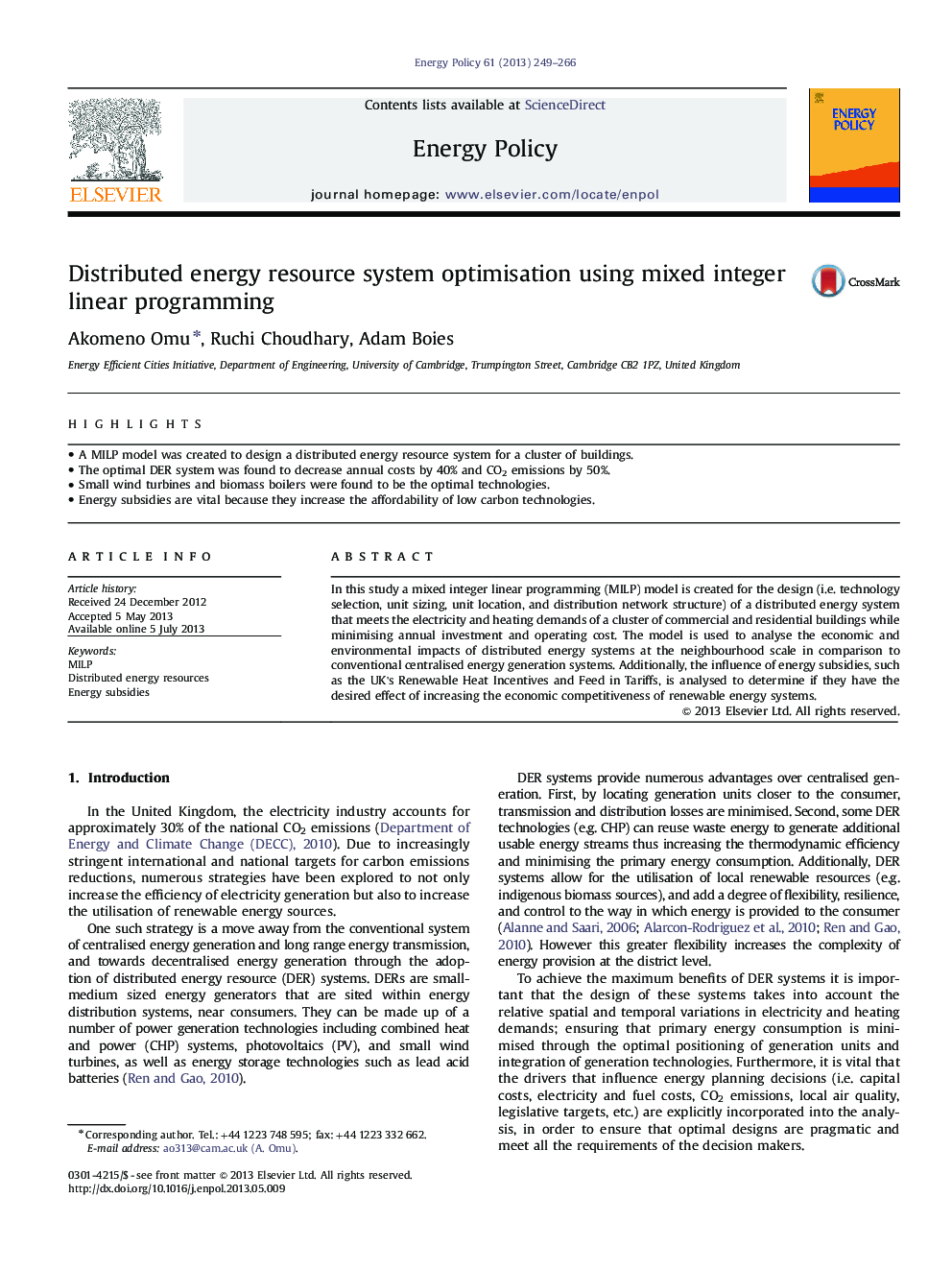| Article ID | Journal | Published Year | Pages | File Type |
|---|---|---|---|---|
| 7404072 | Energy Policy | 2013 | 18 Pages |
Abstract
In this study a mixed integer linear programming (MILP) model is created for the design (i.e. technology selection, unit sizing, unit location, and distribution network structure) of a distributed energy system that meets the electricity and heating demands of a cluster of commercial and residential buildings while minimising annual investment and operating cost. The model is used to analyse the economic and environmental impacts of distributed energy systems at the neighbourhood scale in comparison to conventional centralised energy generation systems. Additionally, the influence of energy subsidies, such as the UK's Renewable Heat Incentives and Feed in Tariffs, is analysed to determine if they have the desired effect of increasing the economic competitiveness of renewable energy systems.
Related Topics
Physical Sciences and Engineering
Energy
Energy Engineering and Power Technology
Authors
Akomeno Omu, Ruchi Choudhary, Adam Boies,
